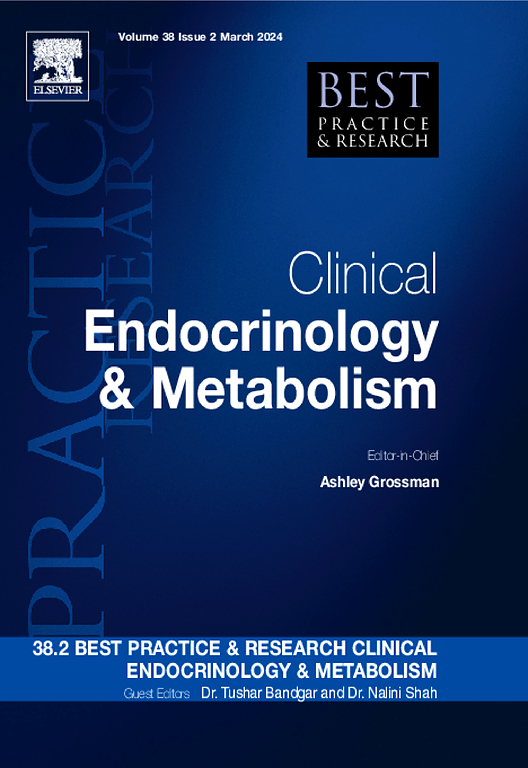Progress in surgical approaches and outcomes of patients with pheochromocytoma and paraganglioma
IF 6.1
1区 医学
Q1 ENDOCRINOLOGY & METABOLISM
Best practice & research. Clinical endocrinology & metabolism
Pub Date : 2025-01-01
DOI:10.1016/j.beem.2024.101954
引用次数: 0
Abstract
Significant advances have been made in the past few decades in surgical management and outcomes of patients with pheochromocytoma and paraganglioma. Improvements in preoperative hypertensive control with the implementation of alpha- and beta-adrenergic blockade has resulted in better intra-operative blood pressure control and less incidence of hypertensive crises, which had been a large source of morbidity in the past. Emphasis on anesthesia and surgical team communication has also assisted in minimizing intraoperative hypertensive events at critical points of the operation. Shifting away from open resection, the now standard-of-care laparoscopic and minimally invasive adrenalectomy offers less pain, shorter hospitalizations, and quicker recoveries. Patient underlying germline mutations can guide the timing, approach, and extent of surgery. Postoperative outcomes have significantly improved with recent advancements in perioperative care in addition to regimented biochemical and radiographic surveillance. Here, we highlight the recent advancements in surgical approaches and outcomes for patients with pheochromocytoma and paraganglioma.
嗜铬细胞瘤和副神经节瘤患者的手术方法和疗效进展。
过去几十年来,嗜铬细胞瘤和副神经节瘤患者的手术治疗和疗效取得了重大进展。随着α-和β-肾上腺素能阻滞剂的应用,术前高血压控制得到了改善,术中血压得到了更好的控制,高血压危象的发生率也降低了,而这在过去一直是发病率的主要来源。重视麻醉和手术团队的沟通也有助于在手术的关键时刻将术中高血压事件降至最低。现在,腹腔镜和微创肾上腺切除术已不再是开腹切除术,而是标准的微创手术,疼痛更轻、住院时间更短、恢复更快。患者潜在的基因突变可以指导手术的时机、方法和范围。除了规范的生化和影像学监测外,围手术期护理的最新进展也大大改善了术后效果。在此,我们将重点介绍嗜铬细胞瘤和副神经节瘤患者手术方法和疗效的最新进展。
本文章由计算机程序翻译,如有差异,请以英文原文为准。
求助全文
约1分钟内获得全文
求助全文
来源期刊
CiteScore
11.90
自引率
0.00%
发文量
77
审稿时长
6-12 weeks
期刊介绍:
Best Practice & Research Clinical Endocrinology & Metabolism is a serial publication that integrates the latest original research findings into evidence-based review articles. These articles aim to address key clinical issues related to diagnosis, treatment, and patient management.
Each issue adopts a problem-oriented approach, focusing on key questions and clearly outlining what is known while identifying areas for future research. Practical management strategies are described to facilitate application to individual patients. The series targets physicians in practice or training.

 求助内容:
求助内容: 应助结果提醒方式:
应助结果提醒方式:


